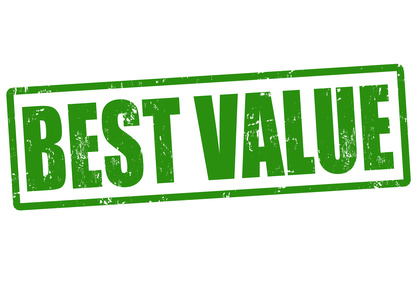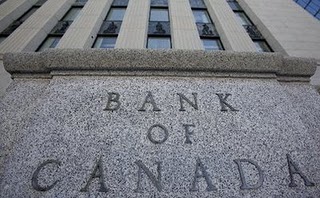This Week in Rates
- The big promo launched this week was CIBC’s 4-year teaser special. You get 1.99% for the first nine months and 2.83% for the next 39 months, for a 2.69% APR. But does anyone really like a tease? Compare this offer to 4-year terms at 2.39% or less, which have better penalty provisions to boot.
Teasers rarely make sense unless:
a) the APR is comparable to, or better than, regular rates of the same term, and/or
b) you really need a lower payment at the beginning of your term (e.g., because you just bought a new home and are tight on quid) - BMO dropped its 5-year “Smart Fixed” mortgage to 2.69% this week. But, beware the limitations (10% annual prepayments instead of 20%, a 25-year maximum amortization, no RediLine line of credit option, no BMO Cash Account, no skip-a-payment and no refinancing elsewhere before maturity, no early discharges without a sale and posted-rate (i.e., potentially high) penalties. Fortunately, BMO’s Smart Fixed mortgage rate also tends to be a good guide for what well-qualified borrowers can negotiate from banks on full-featured mortgages.
- We’re heading into the mortgage industry’s main event: the spring market. That usually means better discounts and higher-profile rate specials are on the way, likely this month or early April.
- Canada’s most popular term, the 5-year fixed, has been drifting lower for weeks. It’s now just 0.03%-points from the all-time bottom of 2.25% (the lowest effective rate ever tracked by RateSpy, which occurred in May 2015).
Where the Value Is
 If you’re well qualified and risk tolerant, you can’t beat a rate under 2.00% these days. In most big provinces, the Spy lists multiple 1- and 2-year fixed options at 1.99% or less. You can even get a 3-year fixed sub-2% if your mortgage is insured.
If you’re well qualified and risk tolerant, you can’t beat a rate under 2.00% these days. In most big provinces, the Spy lists multiple 1- and 2-year fixed options at 1.99% or less. You can even get a 3-year fixed sub-2% if your mortgage is insured.- If you require interest cost certainty, the 5-year fixed is still the place to be at 2.49% or less.
- The Spy continues to list the lowest rates in Canada (that we know of anyway). The absolute cheapest deals are low-frills cash-back effective rates—now at less than 2.30% for an insured 5-year fixed. If you’re wondering, “cash-back effective rates” are where brokers kick back some of their commissions to borrowers and advertise an interest rate equivalent to the same mortgage with no cash back. Brokers quote cashback rates solely because lenders limit their ability to “buy down” rates with their commissions. Cash rebates let brokers offer consumers a better deal than the lender would otherwise allow. Just make darned sure that your broker calculates the cash rebate properly. We’ve seen emails forwarded from clients that put their broker’s computational skills in question.
On Deck: The Bank of Canada
 The BoC decides on rates this coming Wednesday.
The BoC decides on rates this coming Wednesday.- “Increasingly (dangerously) unaffordable” housing (RBC’s words) won’t prevent the Bank of Canada from cutting again if Poloz thinks he has to. (BNN Story)
- Despite the BoC’s slight bias towards a cut (as they admitted last meeting), most economists predict no change at this meeting. They argue the economy isn’t dire enough and Poloz will wait until the March 22 federal budget outlines the Liberal fiscal stimulus plan.
- Oil’s rebound also removes rate-cut pressure. Oil prices have been one of the biggest interest-rate drivers.
- 7 out of 19 economists still expect a BoC cut in 2016. The rest predict no change. (Bloomberg)
- The 2-year government bond yield, which anticipates BoC rate changes, is now trading above the overnight rate for the first time this year, another indication that market considers near-term rate cuts to be off the table.
- Job growth from private-sector employers averaged a pathetic 3,000 a month in 2015, the worst performance since the 2009 recession, says National Bank. That’s not the stuff rate hikes are made of.
Rate Esoterica
Unless you’re really into the nitty gritty of what’s driving rates short-term, you can safely ignore this section.
- If primary dealers are correct, the U.S. Fed Funds rate—which has a strong 0.88 correlation with Canada’s key lending rate—will be 0.50%-points higher by year-end. Don’t hold your breath on the “correct” part. (Reuters)
- Fair value on a 5-year fixed mortgage is somewhere around 175 bps over the 5-year bond yield, say capital markets pros we talk to. That suggests lenders have at least 10-15 basis points (bps) of “spare” margin built into 5-year rates at the moment. There’s a fair chance that spring market competition could squeeze that excess margin out.
- 5-year swap rates, which generally guide 5-year fixed mortgage rates, are still under 1% (Chart). They’ll likely have to jump 10-15+ bps from here before fixed rates move up. In very basic terms, swap rates reflect the cost for big lenders to hedge fixed mortgages. They’re an important component of fixed-rate mortgage pricing.
- The swap spread (i.e., the 5-year swap rate minus the 5-year government bond yield) shrunk to its smallest in over four years. That narrower spread has made it cheaper to hedge fixed mortgages, which in turn has kept rates lower. That said, swap spreads typically increase in the spring home buying season so this may be a short-term phenomenon.

 log in
log in
 The big promo launched this week was CIBC’s 4-year teaser special. You get 1.99% for the first nine months and 2.83% for the next 39 months, for a 2.69% APR. But does anyone really like a tease? Compare this offer to 4-year terms at 2.39% or less, which have better penalty provisions to boot.
The big promo launched this week was CIBC’s 4-year teaser special. You get 1.99% for the first nine months and 2.83% for the next 39 months, for a 2.69% APR. But does anyone really like a tease? Compare this offer to 4-year terms at 2.39% or less, which have better penalty provisions to boot.
11 Comments
Is the prevalence of rate discounts contingent on insuranc
e a new thing? I don’t recall seeing it 5 years ago.
Paying a 1.25% CMHC premium on a 80% LTV mortgage seems to be worthwhile for a 15bp discount if I did my numbers right.
Hey Ralph,
Better pricing on insured loans has been a more pronounced trend since the financial crisis. Investors who buy mortgages like them to be insured, as that reduces their risk and capital requirements and/or makes securitization easier.
As for the math, borrowers are usually better off finding another mortgage provider than paying a 1.25% insurance premium ($1,250 per $100k) at 80% LTV, just to save 15 bps (~$700 per $100k) on interest. But there are exceptions!
Nice try by CIBC to hook new mortgage clients. Hopefully most will be wiser and realize, like you noted, that there are plenty of other rates out there that offer much better value
If there was to be another BOC cut later in the year, what would the expectation be in terms of lower mortgage rates compared to where they are now?
Hi Tara,
A single 1/4 point cut by the Bank of Canada would likely result in prime rate dropping 0%- to 0.15%-pts. Unfortunately, if prime rate did drop, that would pressure narrow variable-rate margins even further. In turn, variable rate discounts (from prime rate) could potentially shrink, thus negating some or all of the BoC’s rate cut.
On the fixed-rate side, the 5-year government yield would likely drop from today’s 0.74% level. Depending on how much it fell, 5-year fixed rates could drop 0.10% to 0.20% or more.
In short, I don’t think anyone would expect significant mortgage rate reductions as a result of one BoC easing.
I’d love to see the 5-year fixed test its all-time low, but even at today’s level it’s still a good rate to be renewing into. As long-time owner who bought back in the 80s and who has seen significant upside appreciation, well the timing couldn’t have been better. I do feel for those younger folk buying at what some of us would consider crazy valuations. The money may be cheap to borrow today, but there’s no guarantee it’ll stay that way
Thx IT, Given slow growth and controlled inflation, big rate hikes do seem like a long shot, even over five years. But like you say, no one should take that for granted. Anyone buying today owes it to themselves to stress test their mortgage to ensure they can afford 2%+ higher rates at renewal. It’s easy to do with the Spy’s stress test calculator:
https://www.ratespy.com/monthly-payment-calculator
I can think of maybe another reason why Teaser rates MAY make sense. If the Teaser rate is compared to an identical APR straight-rate mortgage, the Teaser rate mortgage would actually have a smaller interest-rate differential (IRD) after the introductory-rate period (ex. 9 months). So if you were to break the mortgage a few years into the term, the Teaser rate product would have a smaller penalty than the comparable APR straight-rate product.
Is my understanding correct? Or is there some caveat to my argument that the banks found to get around?
According to the CIBC rep we spoke with today, given equal APRs for both products, the penalty on the 4-year teaser and regular 4-year fixed would be calculated similarly.
We’re assuming this individual knows what he’s talking about, but I’d strongly recommend contacting CIBC directly before relying on it.
Prospective first-time home buyer here testing the waters. My biggest fear is where rates are headed in 5 or 10 years, but I’ve been brushing up with some of your posts and the analysis is really hellpful. Thanks and keep it coming!
Thanks for reading. In 5 to 10 years hopefully you’ll earn a bit more income and have paid down the mortgage — such that you can refinance if rates jump 2-3 percentage points. As long as you build up 20% equity, you’ll have lots of amortization options (i.e., a 25-year, 30-year, 35-year or, worst case, interest-only). In that case, a refinance can keep your payments near today’s levels.
This doesn’t dismiss the fact you’ll be paying more interest if rates surge, but at least you should be able to debt service.